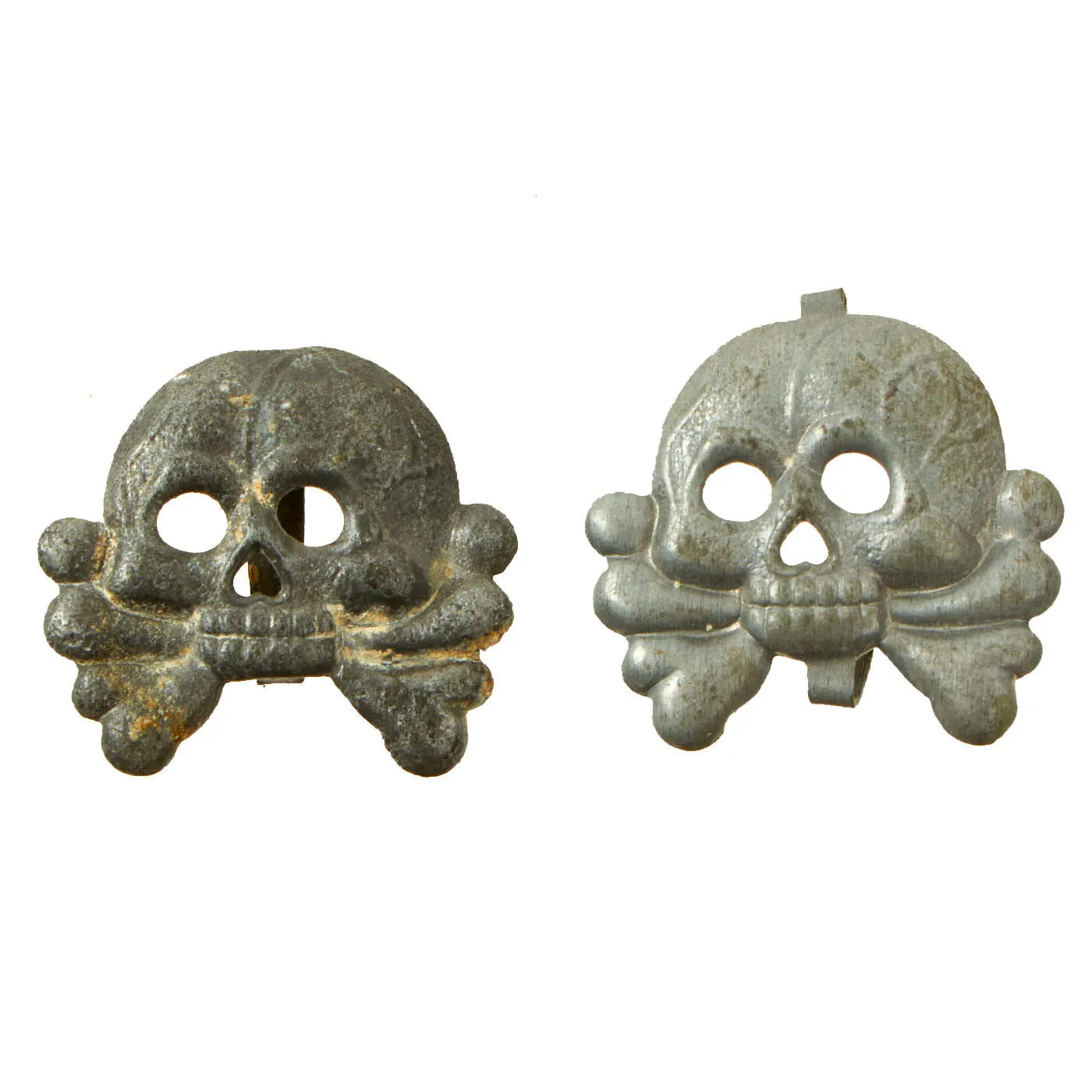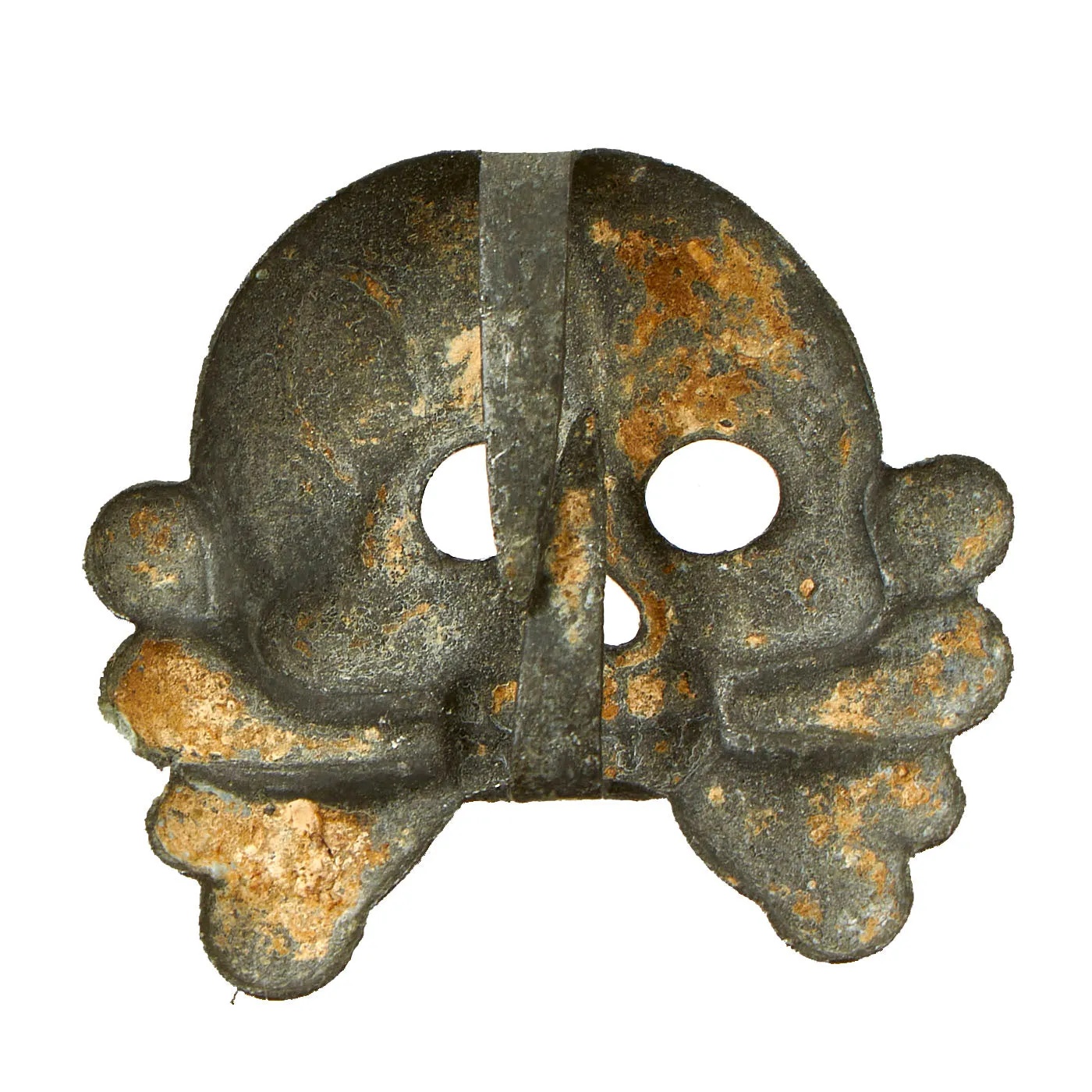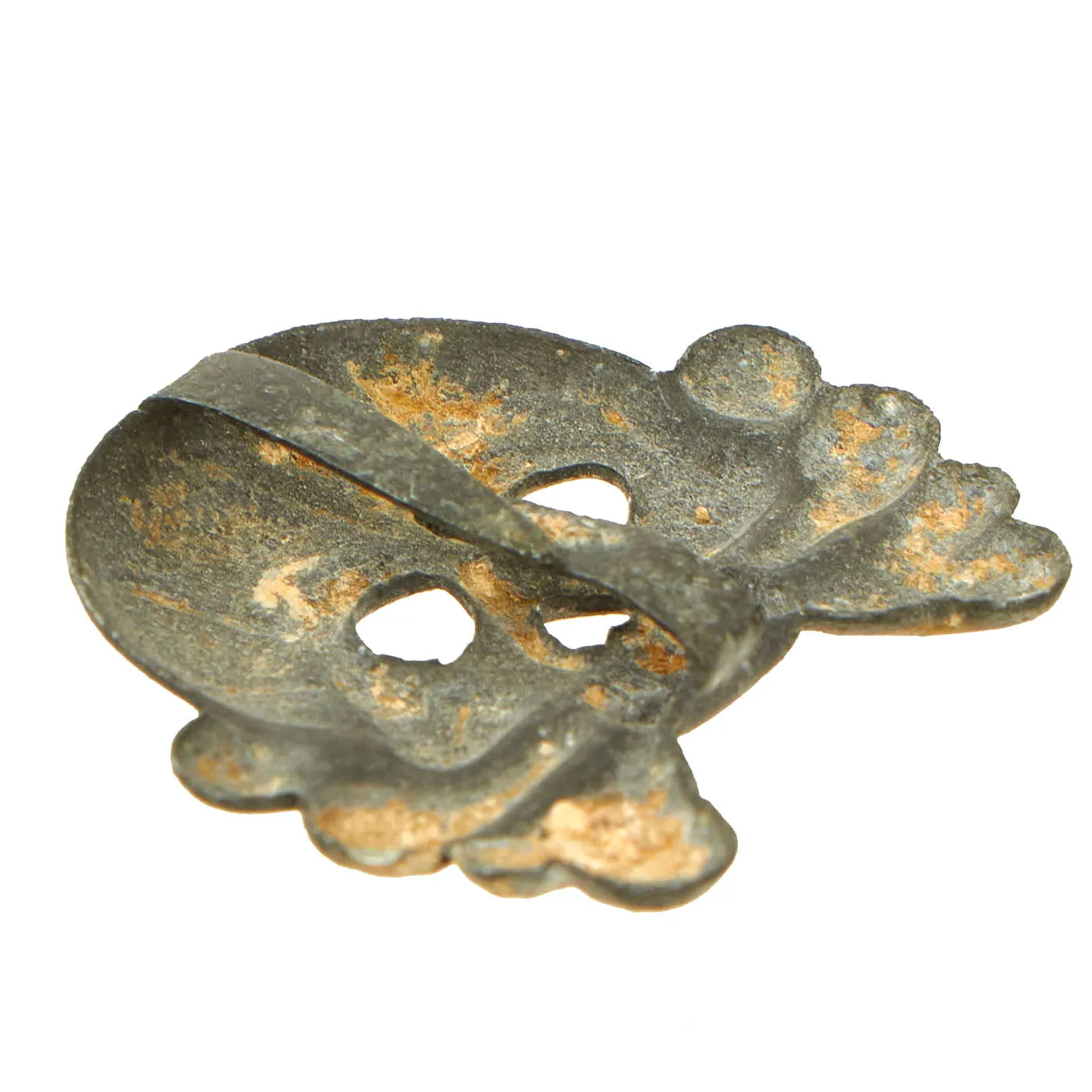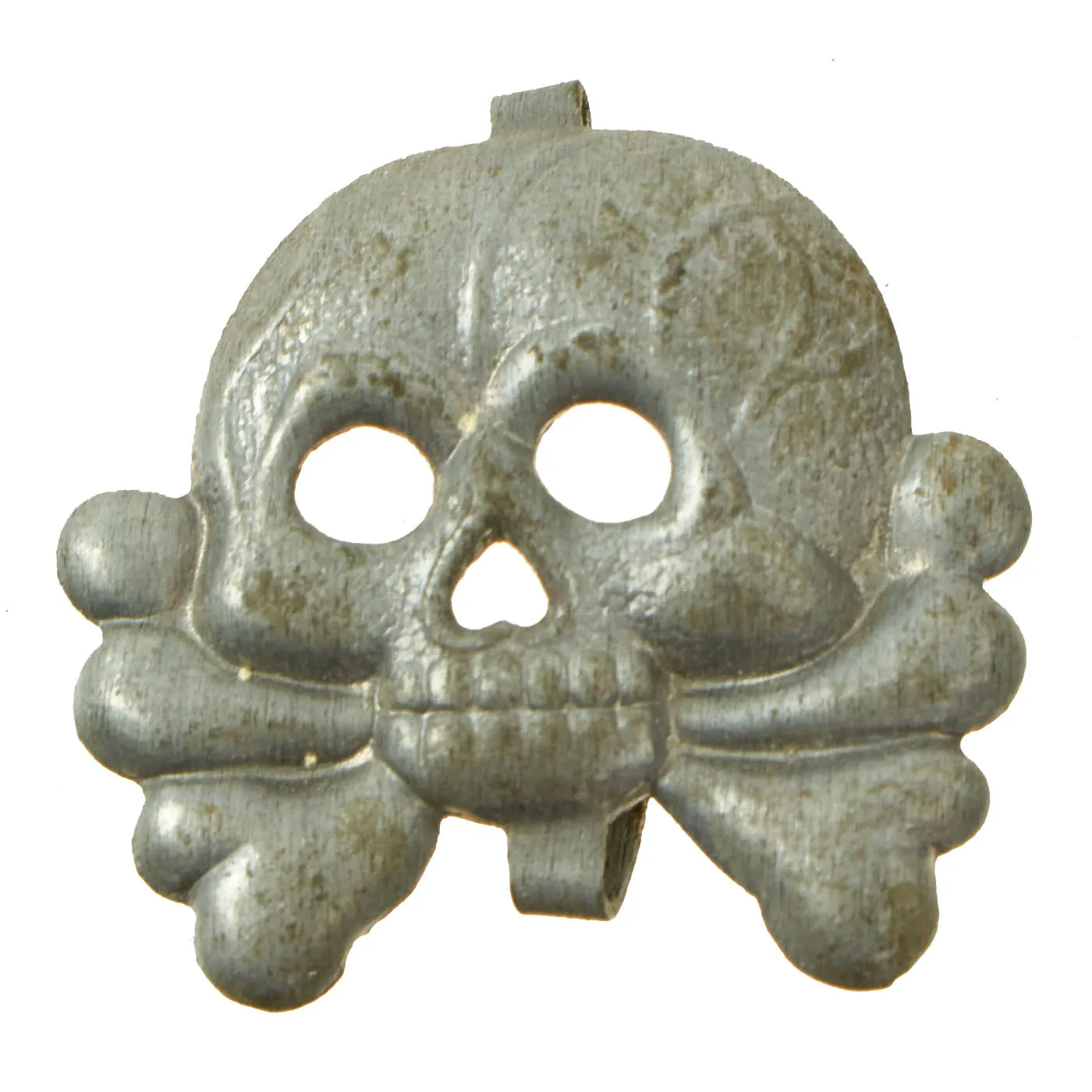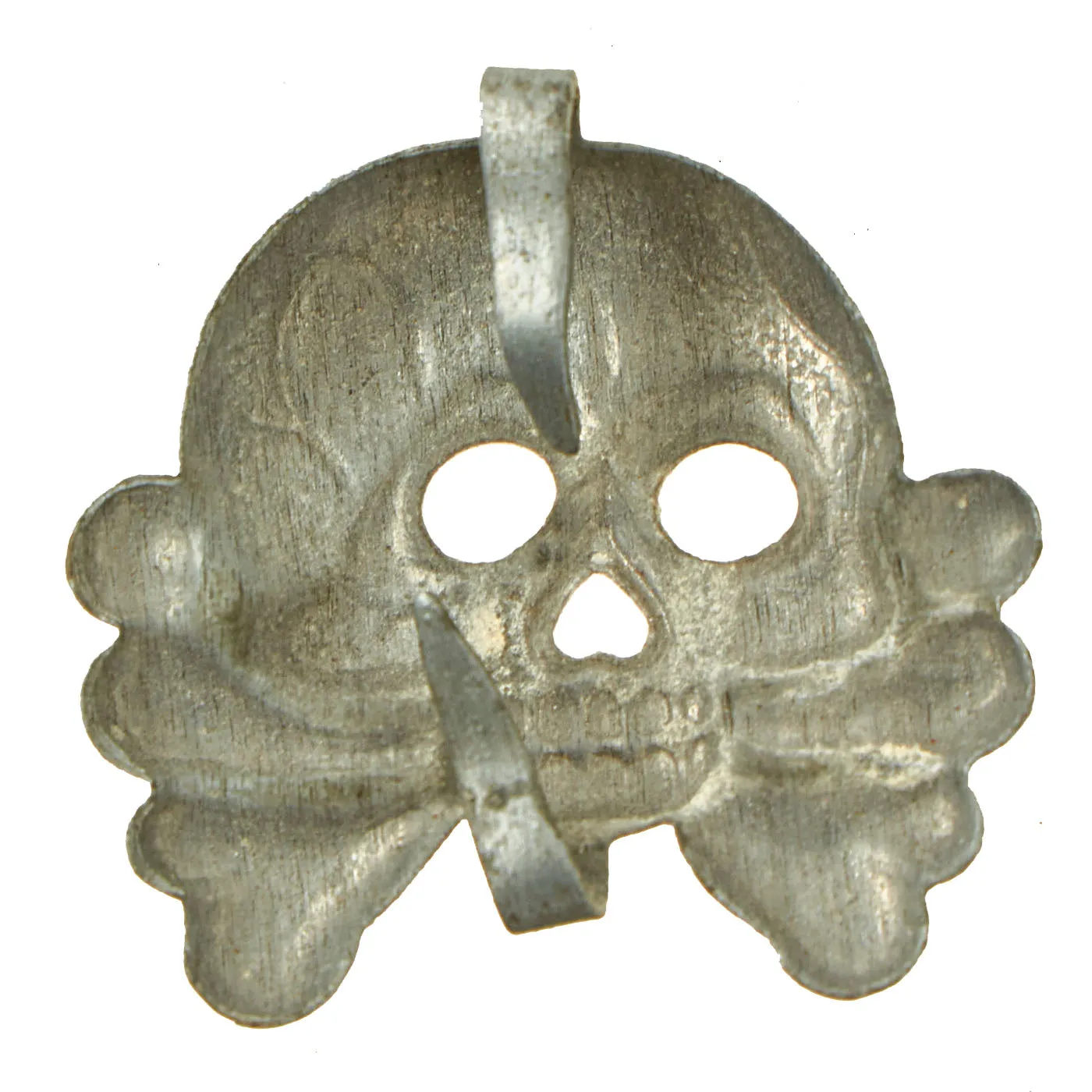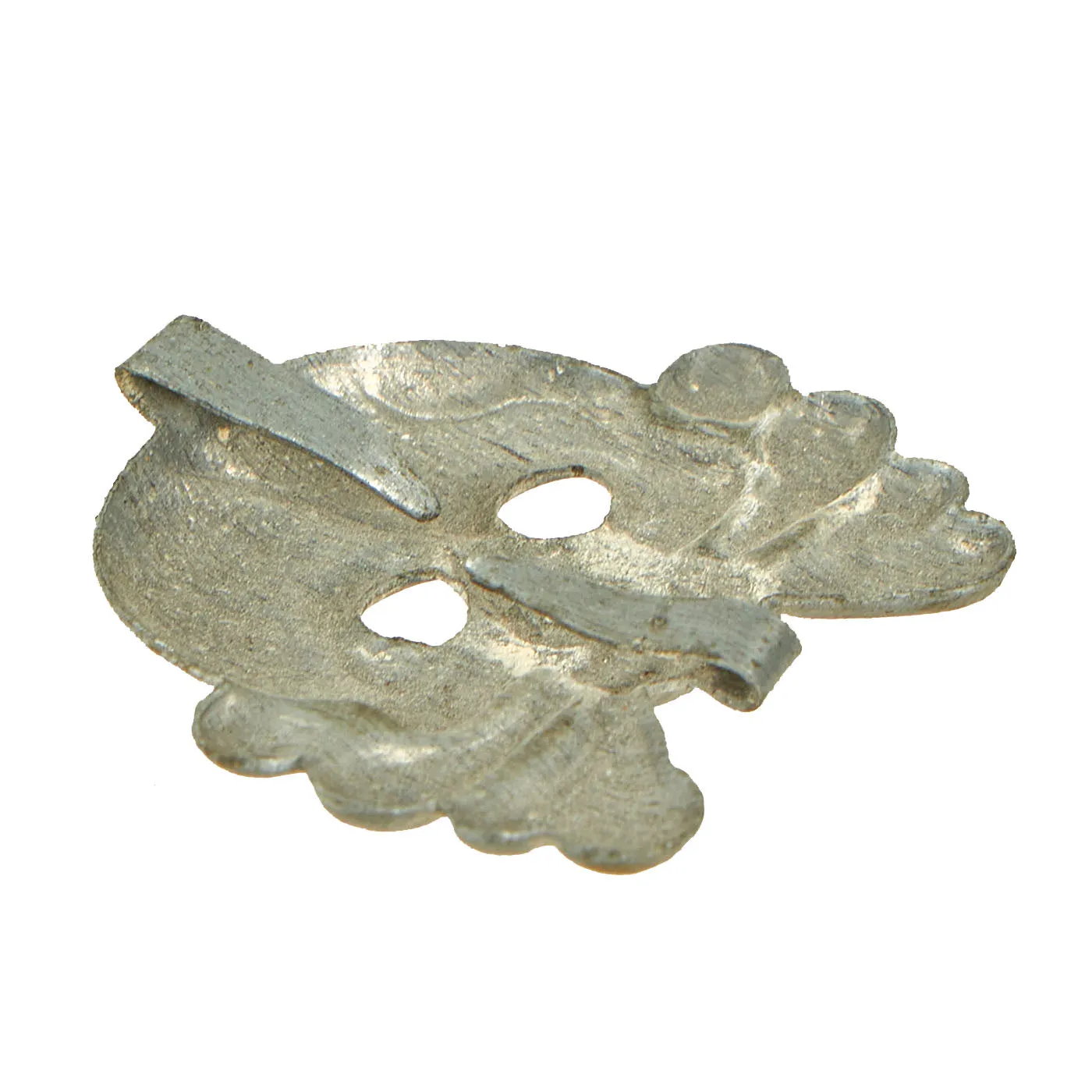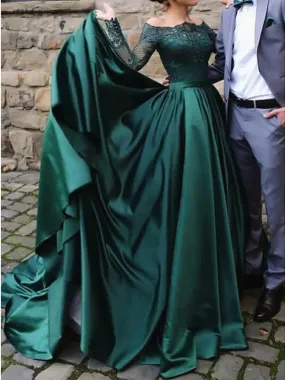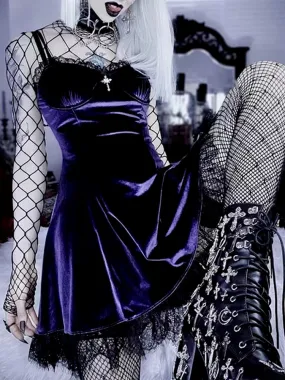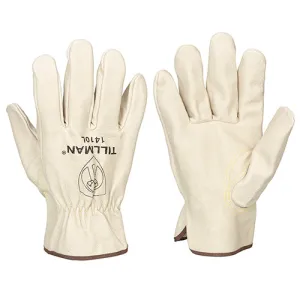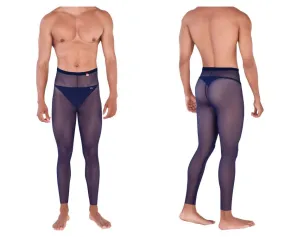Original Item: Only One Available. In November 1934 the Germans introduced the black Panzer wrap tunic for the newly formed armored units and it was worn through-out the war with minor modifications in 1936 and 1942. Along with the new black Panzer wrap tunic the Germans also introduced the unique Panzer collar tabs which utilized the old Prussian "Danziger" style skull and crossbones. The skulls and crossbones were worn through-out the war with minor manufacturing variations.
Here we have a very nice set of early German WWII Panzer "Danziger" style Totenkopf (Death's Head) insignia for Kragenpatten (collar tabs). Both "skull and crossbones" insignia made from non-magnetic metal, and have a lovely patina. One looks to be possibly "ground dug" as it has some dirt stuck on the back and front, while the other looks to just have been removed from the collar tab. Both still have their pin clasps on the top and bottom, and they measure approximately 7/8" across.
A great pair of Panzer insignia, ready to add to your collection!
Use of the Totenkopf as a military emblem began under Frederick the Great, who formed a regiment of Hussar cavalry in the Prussian army commanded by Colonel von Ruesch, the Husaren-Regiment Nr. 5 (von Ruesch). It adopted a black uniform with a Totenkopf emblazoned on the front of its mirlitons and wore it on the field in the War of Austrian Succession and in the Seven Years' War. The Totenkopf remained a part of the uniform when the regiment was reformed into Leib-Husaren Regiments Nr.1 and Nr.2 in 1808. The skull continued to be used by the Prussian and Brunswick armed forces until 1918, and some of the stormtroopers that led the last German offensives on the Western Front in 1918 used skull badges. Luftstreitkräfte fighter pilots Georg von Hantelmann and Kurt Adolf Monnington are just two of a number of Central Powers military pilots who used the Totenkopf as their personal aircraft insignia.




